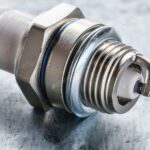Internal combustion engines, in which the combustion of fuel occurs in the engine cylinder itself, are non-cyclic heat engines. The temperature due to evolution of heat, because of the combustion of fuel inside the cylinder is so high, that the cylinder is closed by water circulation around it to avoid rapid deterioration. The working fluid, the fuel-air mixture undergoes permanent chemical change due to combustion and the product of combustion after doing work are thrown out of the engine, and the fresh charge is taken. So the working fluid does not undergo a complete thermodynamic cycle.
Most of the power plant operates in a thermodynamic cycle i.e. the working fluid undergoes a series of processes and finally returns to its original state. Hence, in order to compare the efficiencies of various cycles, a hypothetical efficiency called air standard efficiency is calculated.
If air is used as the working fluid in a thermodynamic cycle, then the cycle is known as “Air Standard Cycle”.
To simplify the analysis of I.C. engines, air standard cycles are conceived.
Assumptions:
1. The working medium is assumed to be a perfect gas and follows the relation pV= mRTor P = pRT
2. In air standard cycle, a certain mass of air operates in a complete thermodynamic cycle, i.e. there is no change in the mass of the working medium.
3. The heat added and rejected with external heat reservoirs.
4. All the processes that constitute the cycle are reversible.
4. Heat is added and rejected with external heat reservoirs.
5. The working medium has constant specific heats.


